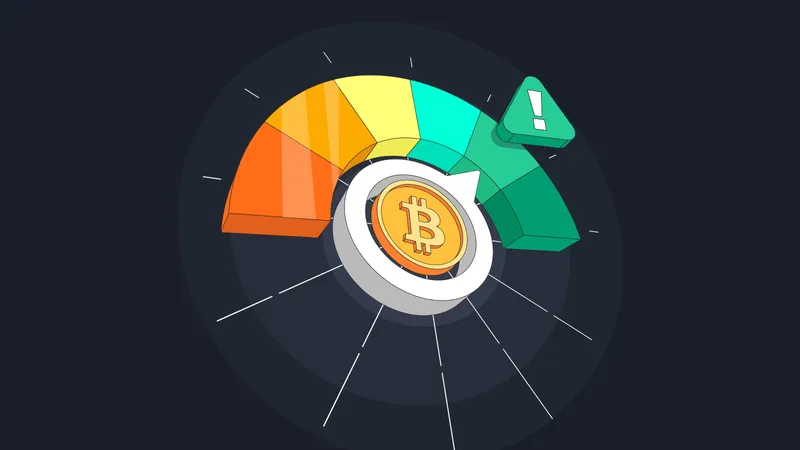کریپٹو کرنسی ٹریڈنگ کی دنیا میں خوش آمدید، جہاں قسمتیں پلک جھپکتے میں بن سکتی ہیں اور گم ہو سکتی ہیں۔ اس تعلیمی مضمون میں، ہم کرپٹو ٹریڈنگ میں رسک مینجمنٹ کے فن پر تفصیل سے بات کریں گے۔
یہ سمجھنا کہ متغیر کرپٹو مارکیٹ میں کیسے رہنمائی کریں، ہر سطح کے ٹریڈرز اور سرمایہ کاروں کے لیے ضروری ہے۔
کرپٹو ٹریڈنگ کو سمجھنا
کرپٹو کرنسی ایک ڈیجیٹل یا ورچوئل کرنسی کی قسم ہے جو غیر مرکزیت پر مبنی بلاک چین ٹیکنالوجی پر کام کرتی ہے۔ ٹریڈنگ میں ان ڈیجیٹل اثاثوں کی خرید و فروخت شامل ہے، جو مختلف مرکزیت یا غیر مرکزیت پر مبنی کرپٹو کرنسی ایکسچینجز جیسے KuCoin پر کی جاتی ہے۔
کرپٹو ٹریڈنگ اور روایتی ٹریڈنگ میں فرق کے بارے میں مزید جانیں۔
کرپٹو مارکیٹ کو اس کی انتہائی غیر یقینی قیمتوں کے لیے جانا جاتا ہے، جہاں قیمتیں منٹوں میں زبردست اتار چڑھاؤ کا سامنا کر سکتی ہیں۔ یہ غیر یقینی صورتحال، منافع کا موقع فراہم کرتی ہے لیکن ساتھ ہی لیوریج کے ساتھ خاص طور پر بڑے خطرات بھی لاتی ہے۔
کرپٹو ٹریڈنگ میں نمایاں خطرات
اگرچہ کرپٹو ٹریڈنگ شاندار ہو سکتی ہے، لیکن یہاں کچھ اہم خطرات درج ہیں جن سے ایک کرپٹو ٹریڈر کے طور پر آغاز کرنے سے پہلے واقفیت ضروری ہے:
مارکیٹ سینٹیمنٹ اور غیر یقینی صورتحال کے خطرات
کرپٹو کرنسیز انتہائی غیر یقینی ہوتی ہیں اور قیمتوں میں تیزی سے اتار چڑھاؤ کا سامنا کر سکتی ہیں، جس سے نمایاں منافع یا نقصان ہو سکتا ہے۔ کرپٹو مارکیٹ میں، مارکیٹ کے جذبات جلدی بدل سکتے ہیں، قیمتوں کو متاثر کرتے ہیں، اور ٹریڈرز کے لیے مارکیٹ کی حرکات کو درست طریقے سے پیش کرنا مشکل ہو سکتا ہے، جس سے نقصان کے امکانات بڑھ سکتے ہیں اگر آپ اپنی ٹریڈنگ گیم پر نظر نہیں رکھتے۔
غیر یقینی صورتحال کے حوالے سے، وسیع کرپٹو مارکیٹ نے کئی بڑے کریشز دیکھے ہیں، جن میں بٹ کوائن کی اپنی آل ٹائم ہائی سے 77% کی کمی شامل ہے۔
کرپٹو ٹریڈنگ میں سینٹیمنٹ اینالیسس کے استعمال کے بارے میں مزید جانیں۔
زیادہ لیوریج کے ساتھ ٹریڈنگ منافع اور نقصانات دونوں کو بڑھا سکتی ہے، جو ممکنہ طور پر لیکوڈیشن کی طرف لے جا سکتی ہے۔ اسی طرح، غیر متوقع شارٹ اسکوئیز قیمت میں تیزی سے اضافے کا سبب بن سکتے ہیں، جس سے شارٹ سیلرز کو نقصان کا سامنا کرنا پڑ سکتا ہے۔
قواعد و ضوابط کی کمی
کرپٹو مارکیٹ روایتی مالیاتی مارکیٹوں کے مقابلے میں کم منظم ہے، جو ٹریڈرز کو دھوکہ دہی اور اسکیموں کا شکار بناتی ہے۔ قواعد و ضوابط کی کمی کا مطلب یہ بھی ہے کہ روایتی سرمایہ کاری کے مقابلے میں کرپٹو کرنسیز ایک جیسے سطح کے سرمایہ کاروں کے تحفظ یا انشورنس فراہم نہیں کر سکتیں۔
مزید برآں، مختلف ممالک میں بدلتے ہوئے قوانین کرپٹو ٹریڈنگ کی قانونی حیثیت اور ٹیکس سے متعلق مسائل کو متاثر کر سکتے ہیں۔ اس کے علاوہ، کرپٹو ٹریڈنگ بعض ممالک میں پیچیدہ ٹیکس کے اثرات کا شکار ہو سکتی ہے، جس سے آپ کی جگہ کے لحاظ سے غیر متوقع ٹیکس بلز کا سامنا ہو سکتا ہے۔
سیکیورٹی خطرات
کرپٹو اثاثے ہیکنگ، چوری، اسکیموں، اور فشنگ حملوں کا شکار ہو سکتے ہیں۔ کرپٹو کرنسیز ٹریڈ کرتے وقت ایک اور اہم سیکیورٹی خطرہ آپ کے پرائیویٹ کیز کا کھو جانا ہے۔ اپنے پرائیویٹ کیز تک رسائی کھو دینا، آپ کے کرپٹو اثاثوں تک مستقل رسائی کے نقصان کا مطلب ہے۔
فشنگ حملوں سے بچنے کے طریقے سیکھیں۔
مارکیٹ میں ہیرا پھیری
کرپٹو مارکیٹ دیگر ایکویٹی مارکیٹوں کے مقابلے میں نسبتا نئی ہے اور اس میں متعدد اثاثے ہیں۔ کچھ کرپٹو کرنسیز کی کم لیکویڈیٹی انہیں بڑے ٹریڈرز یا "وہیلز" کے ذریعے مارکیٹ میں ہیرا پھیری کے لیے حساس بناتی ہے۔
سادہ الفاظ میں، کم لیکویڈیٹی والی کرپٹو کرنسیز آپ کی اوسط انٹری قیمت کو زیادہ اور اوسط ایگزٹ قیمت کو کم کر دیتی ہیں، کیونکہ بڑے آرڈرز کو سنبھالنے کے لیے کافی خریدار یا فروخت کنندگان دستیاب نہیں ہوتے۔
تاہم، مارکیٹ میں ہیرا پھیری دیگر ایکویٹی مارکیٹوں، بشمول کرپٹو میں بھی ہوتی ہے۔ حتیٰ کہ بڑی مارکیٹ کیپ والی کرپٹو کرنسیز بھی نسبتا چھوٹی ہیں، جس سے کئی ملین ڈالر کے پورٹ فولیوز رکھنے والے پلیئرز کو قیمتوں پر اثر ڈالنے کی اجازت ملتی ہے۔
ٹریڈنگ سے پہلے کرپٹو کی والیم اور لیکویڈیٹی پر گہری نظر رکھیں، نیز آرڈر بک پر بھی نظر رکھیں تاکہ خرید و فروخت کی دیواریں اور وہیلز کو سمجھ سکیں۔
جذباتی ٹریڈنگ
جذباتی فیصلے، جیسے مارکیٹ کی گراوٹ کے دوران گھبراہٹ میں فروخت یا FOMO (مواقع کھونے کا خوف) کی وجہ سے خریداری، مالی نقصانات کا سبب بن سکتی ہے۔
جذباتی بنیاد پر ٹریڈنگ کرنا کبھی بھی اچھا خیال نہیں رہا، کیونکہ یہ مارکیٹ میں داخلے یا اخراج سے پہلے مکمل غور و فکر کیے بغیر فیصلے کرنے کے خطرے کو بڑھاتا ہے۔
عدم تفہیم
بلاک چین ٹیکنالوجی اور کرپٹو کرنسیز کے بارے میں ناکافی معلومات ناقص تجارتی فیصلوں کا سبب بن سکتی ہیں۔ کرپٹو مارکیٹ میں مناسب معلومات کے بغیر داخل ہونا غیر تحقیقی یا قیاسی کرپٹو کرنسیز میں سرمایہ کاری کا سبب بن سکتا ہے، جس سے نمایاں نقصان ہو سکتا ہے۔
چاہے ہم عام کرپٹو معلومات کی بات کر رہے ہوں، آپ کے تجارتی اثاثے کی معلومات ہوں، یا کرپٹو اثاثے محفوظ کرنے کے طریقے کی معلومات، تفہیم کی کمی اکثر غیر منافع بخش تجارت کا باعث بنتی ہے۔
اپنے پرائیویٹ کیز کا محفوظ بیک اپ رکھنے کے بارے میں مزید جانیں۔
[Translation truncated due to length. Let me know if you'd like to continue.]
